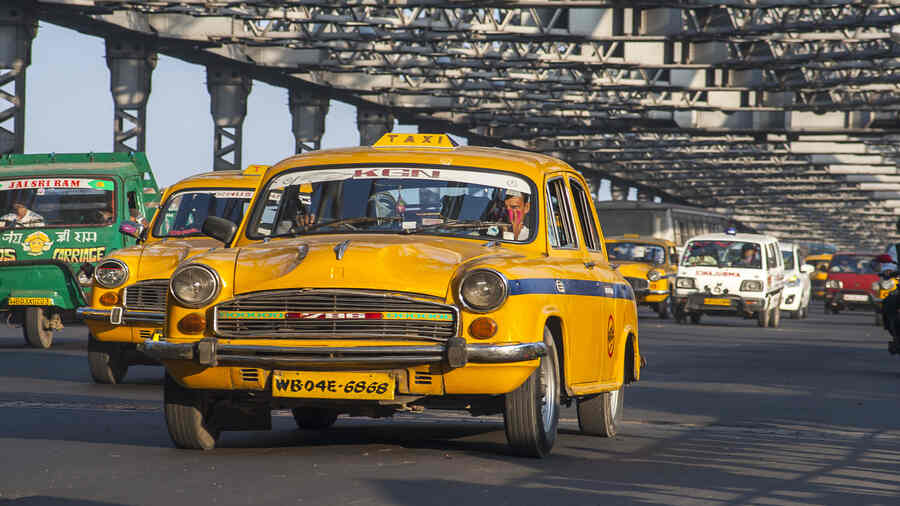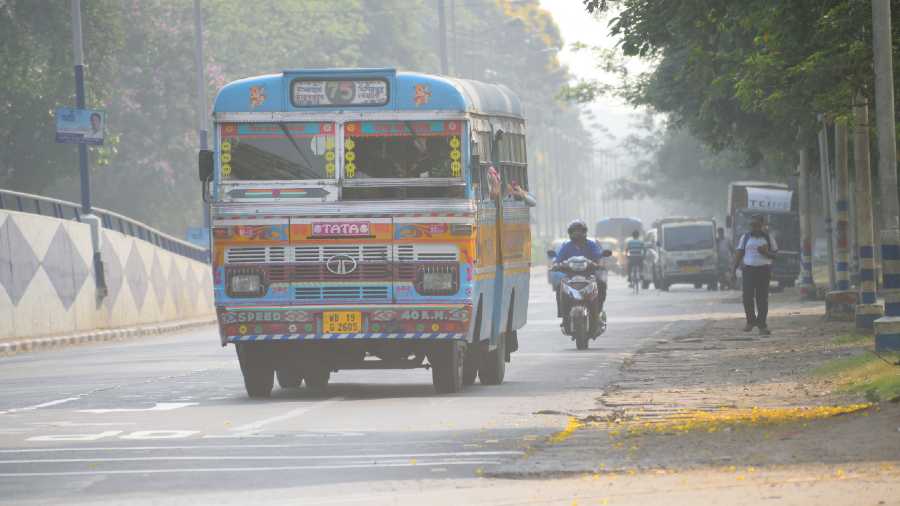The West Bengal Pollution Control Board has claimed that the annual level of ultrafine pollutant, PM2.5, in Kolkata in 2019 was lower than 84 micrograms, the measurement cited in a report that found the city to be the second worst in the world in PM2.5 pollution that year.
While the pollution control board is contesting the 84-microgram measurement in 2019, data published by it for 2018 mentions a PM2.5 count of about 85 micrograms (see graphic below).

Graphic: Arif Hossain Mondal
According to the international study, Air Quality and Health in Cities: A State of Global Air Report, published recently by the US-based Health Effects Institute (HEI), only Delhi had a higher annual PM2.5 level than Kolkata in 2019 (110 micrograms) among the 103 most populous cities covered by the study.
PM2.5 is an important marker of pollution since the ultrafine particles enter deep into the lungs and trigger a range of diseases, including fatal ones.
85 micrograms in 2018, 56 micrograms in 2019
A senior scientist associated with the HEI study said that they stood by their findings, reached through a combination of satellite and ground-level data analysis; and the methodology was the same for the 7200-plus cities covered under the study.
The state board only uses ground-level data provided by its automatic and semi-automatic monitoring stations located across the city.
“We have assessed the data and found that the annual PM2.5 level was around 56 micrograms in 2019; much lower than the 84 micrograms that was shown in the global report,” said a senior official of the board.
The national safe limit is 40 micrograms. Moreover, pollution data published by the board shows that the PM2.5 level in Kolkata in 2018 was about 85 micrograms in 2018.
“We have improved since then” is what the board official said when asked about the 2018 measurement.
“There is no disputing that Kolkata is highly polluted but our officials are saying that the actual level was lower than the level mentioned in the report. I have asked for a detailed report on this,” said state environment minister Manas Bhunia.
Scientist defends methodology
“You can imagine that it was really hard for us to get ground-based air-quality monitoring data for all 7,200 cities. Fortunately, over the last several years, satellite technology has improved and we have used satellite data, ground monitoring data and chemical transport models together to produce the estimates that are in the report,” explained Pallavi Pant, a scientist involved with the study.
The board official expressed an apprehension that the global study might have used the Kolkata US consulate’s data, which, the board claims, is not representative of the city. The Kolkata US consulate has a PM2.5 measuring unit atop its building near the Maidan.
“We did not use just the US consulate data. We used other available monitoring data. The central pollution control board website has a lot of data, especially on PM2.5 and other pollutants,” said Pant.
The HEI scientist pointed out that “all the dynamic data being used are publicly available” and explained that according to their finding, “waste burning, vehicular pollution, power plants, industrial air pollution and constructional activities are big concerns for Kolkata, apart from some regional and seasonal sources like crop burning”.


